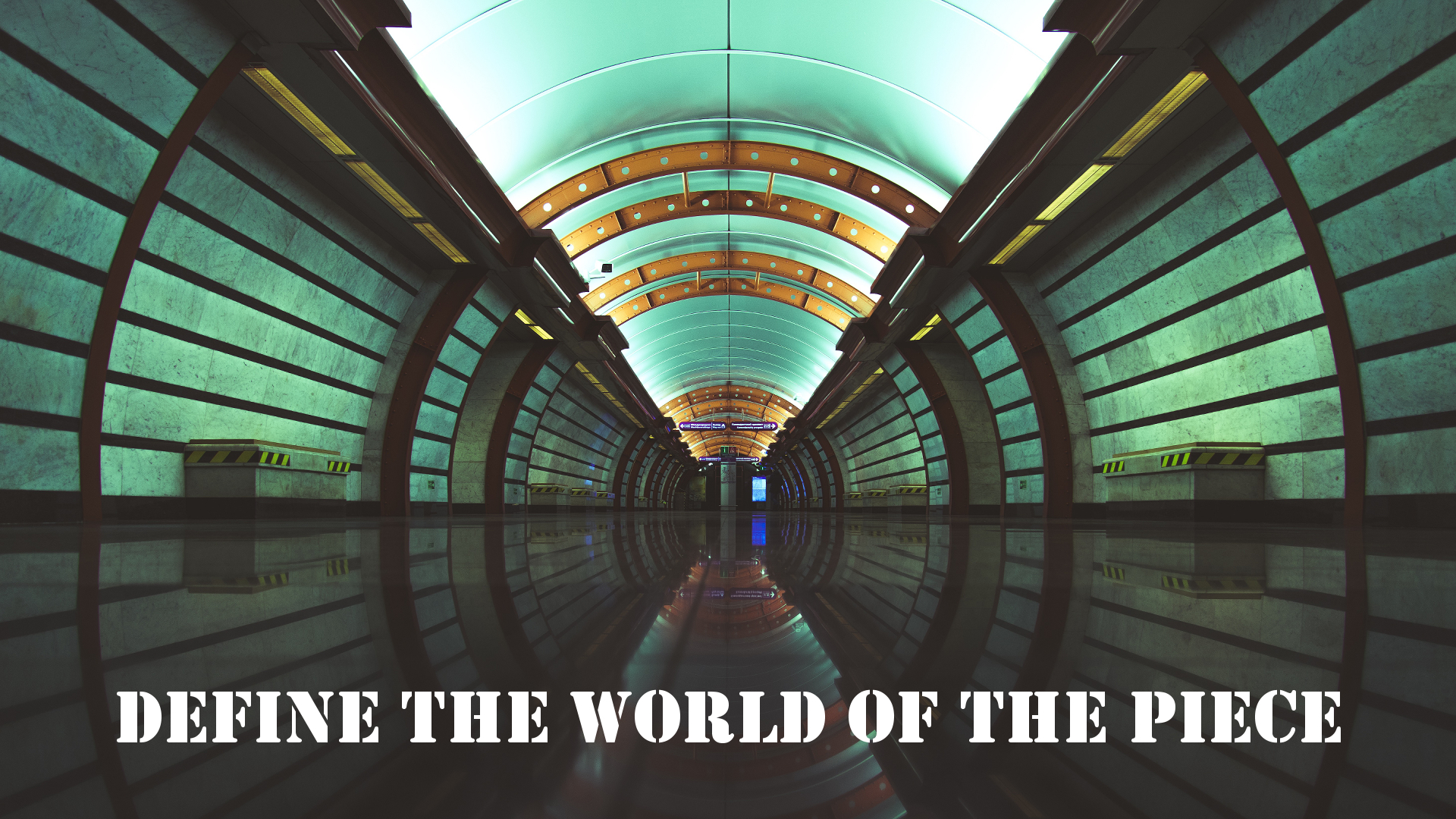To share something with an audience, we need to understand it first. The journey of sharing what we want to show starts with understanding the matter. To do so, we define the world of the piece.
Defining the world of the piece means describing the circumstances in which our dancers live on stage. Those circumstances are the facts of the piece.
The world of the piece looks very different when we compare strictly narrative pieces with plain concept pieces. But as soon as the world of the piece is defined, the work inside this world is the same.
What is the World of the Piece?
These are the major points that come to my mind when I define the world of a piece:
- Where and when is it happening? Place, and Time.
- Who are the characters?
- What is happening? Story.
Place and time define all the circumstances and tell us where to look for references. A crew that presents a piece that is set in London of the Victorian Age needs to start their research in books and movies about this time. If the same crew is presenting a piece that is solely based on geometrics without referencing a real epoche or place, they shall still define their place and time as well. It makes a difference if you dance in a cube that is precisely the size of your stage or empty plains that extend into infinity.
Knowing who we are on stage is the next part. The range goes from full characters with backstory and individual goals to abulic agents of a system that is based on the ideas of the piece. Characters with a backstory are easy enough to understand, but what do I mean by agents of a system?
In concept pieces, you might not play a person or someone with feelings. You may represent a drone that follows simple programming like “repeat choreography A until you collide with dancer 2”. This task could be done with or without emotional involvement. Defining it creates the character. Not defining it creates confusion and inconsistent interpretation by different performers. This confusion can be part of the concept, but then it needs to be clear and becomes part of the world of the piece.
In every piece, something is going on. The story of the piece. It can be traditional storytelling or just a description of what is happening due to the abstract concepts and ideas that shape the piece. But there is always something happening. If that would not be the case, why would we make a piece?
Examples
Let me finish this with two examples. The first, from my older piece barcoded: The protagonists live in a slightly futuristic version of our world where the majority of people consents to what they want in their fellow citizens. Everyone who is outside these parameters is thrown in a penitentiary and kept there until they fit into the regular world. The dancers are those outsiders that are abandoned by society. We learn their backstories, the reasons for their imprisonment and accompany them on their attempt to break out of the prison.
As a contrast, here is an example of a piece that is not based on storytelling (you already heard about this one above):
The world of the piece is empty plains. There is no border as it extends into infinity. There are no landmarks, no irregularities, no texture. The plains are inhabited by dancers who follow a complex program that contains choreography and timings that are based on geometrics, perfect square angles. There are no decisions to be made, no questions to ask, no emotions to feel. The program is set and was decided by randomization. The performance is one of a million possibilities. It’s not the first one that is happening – and it will not be the last.
Both worlds are clear. One based on a storyline, the other based on a concept. We work with these descriptions to immerse ourselves in the matter.
It’s time to create worlds. Let’s do it.

